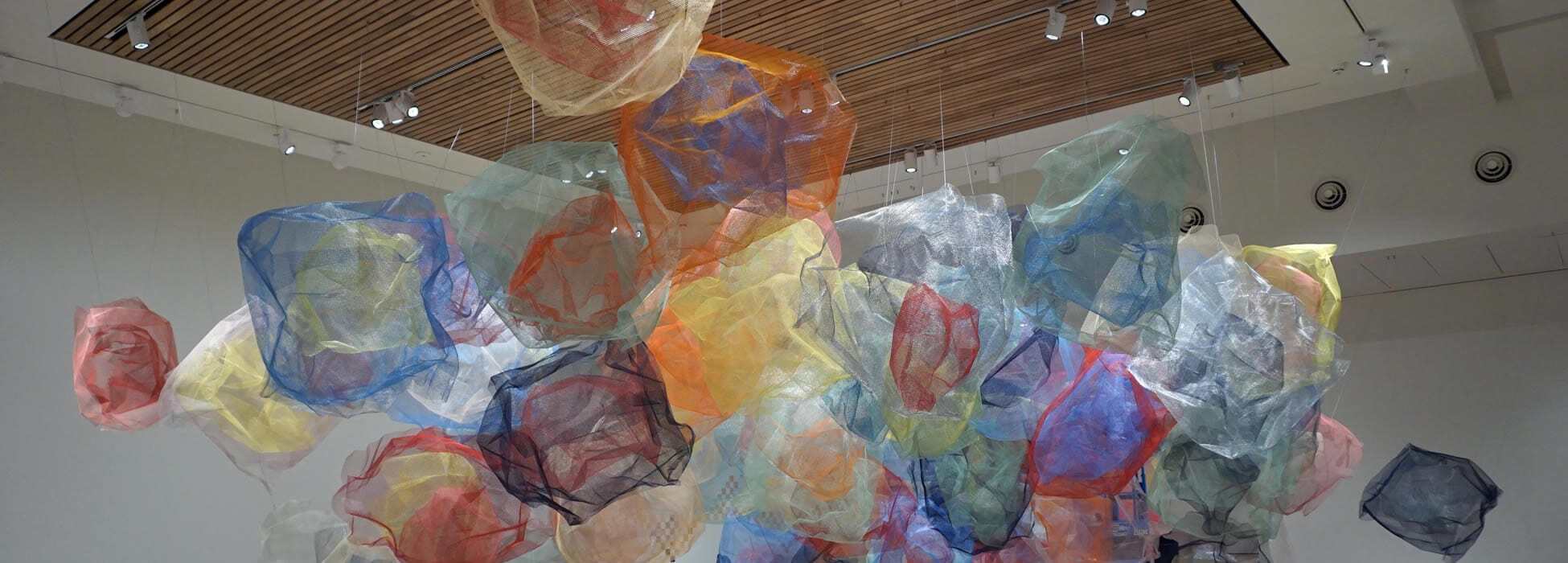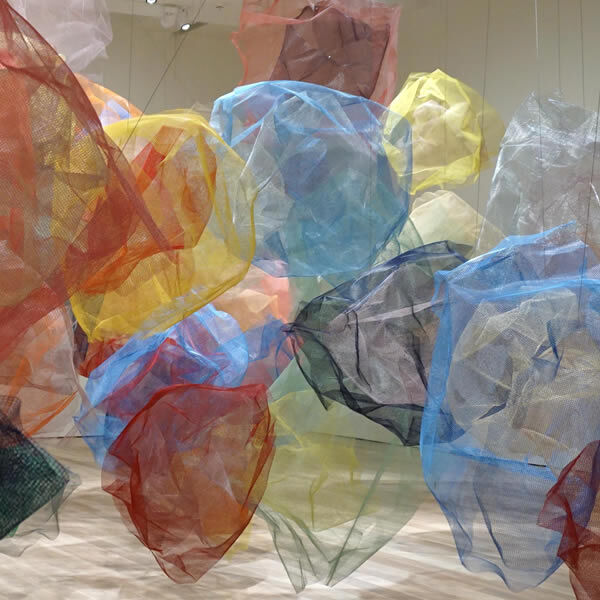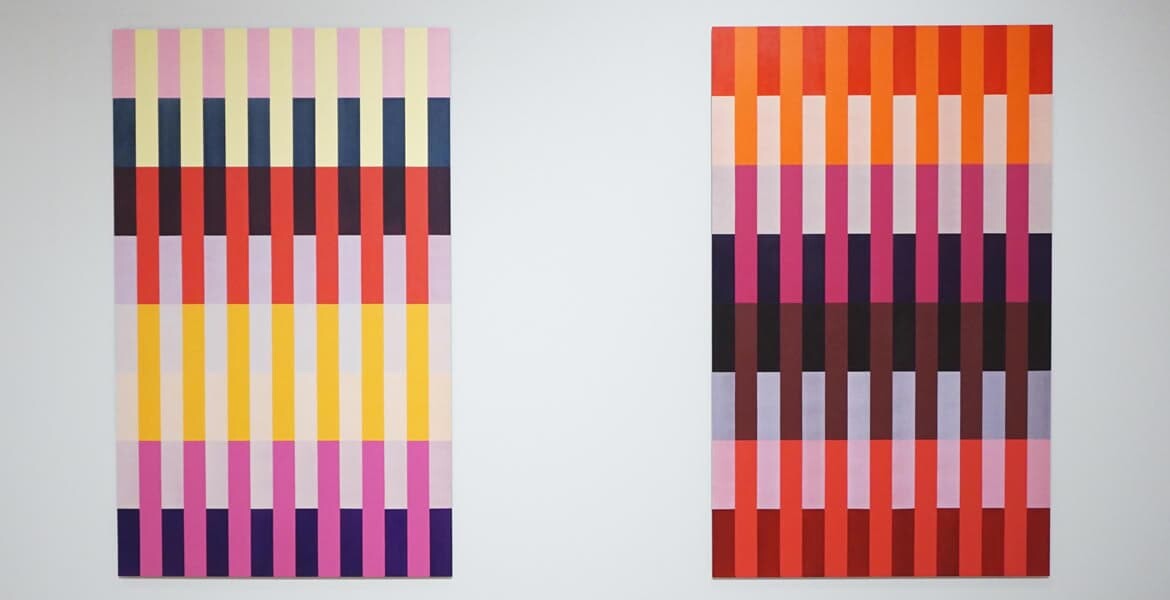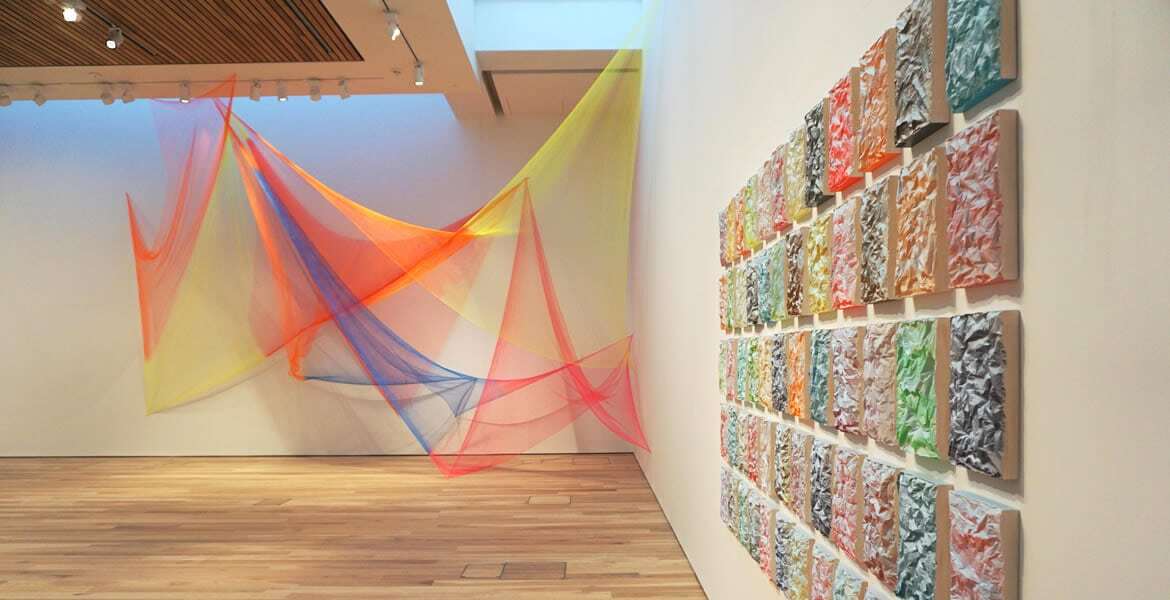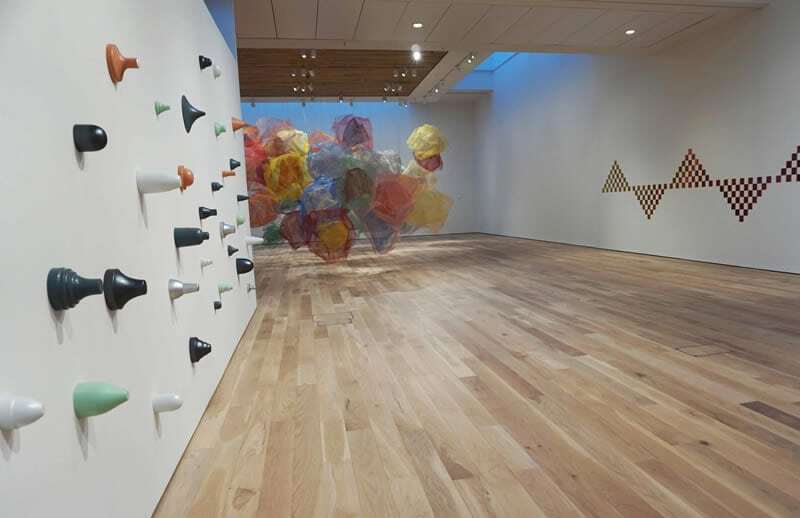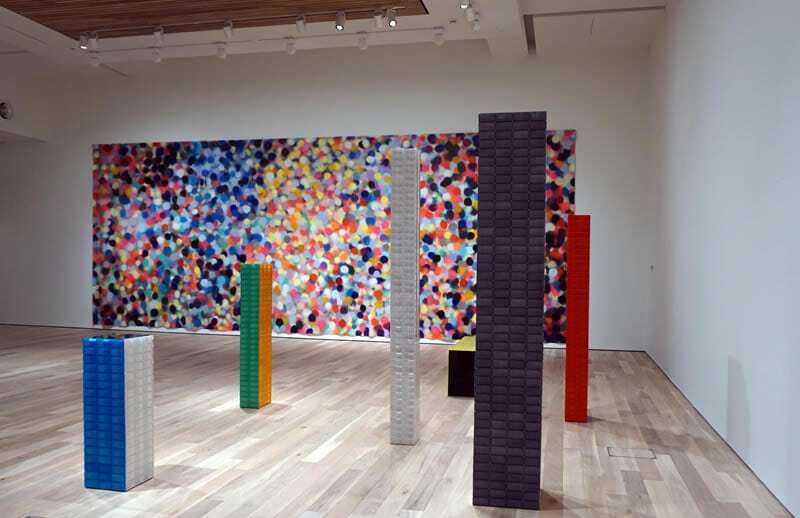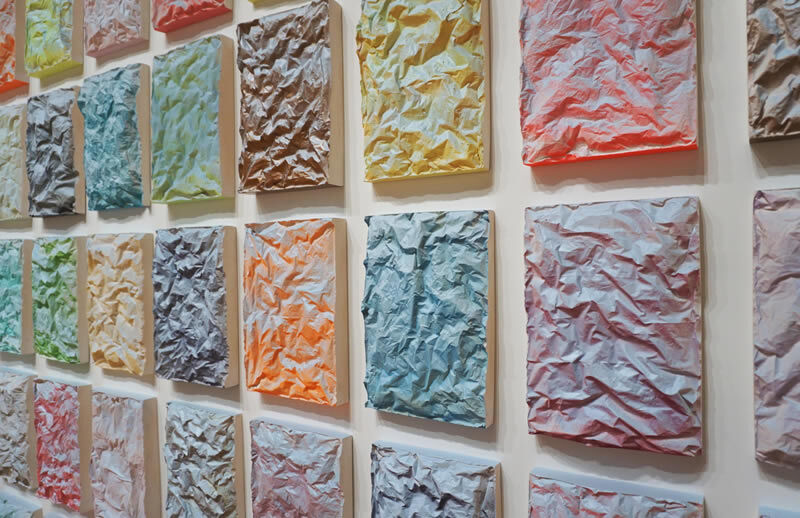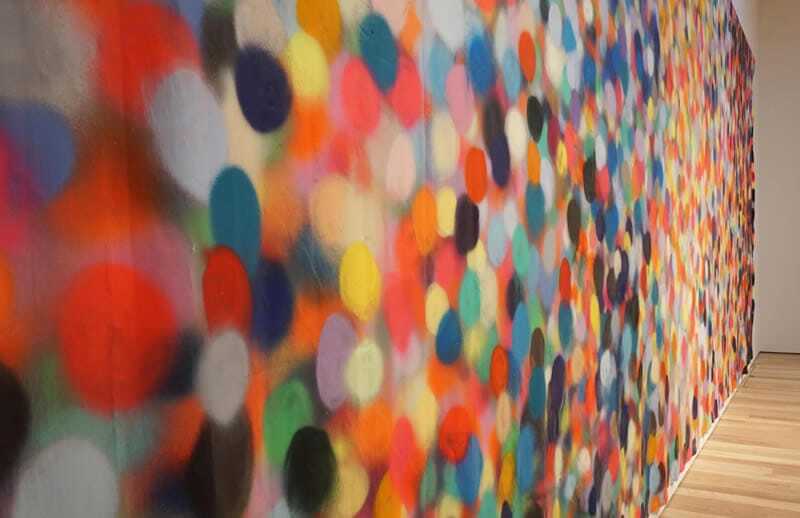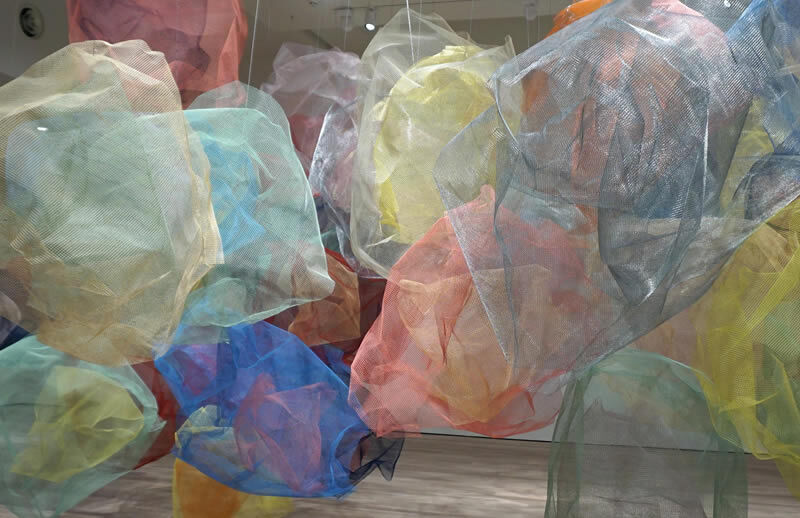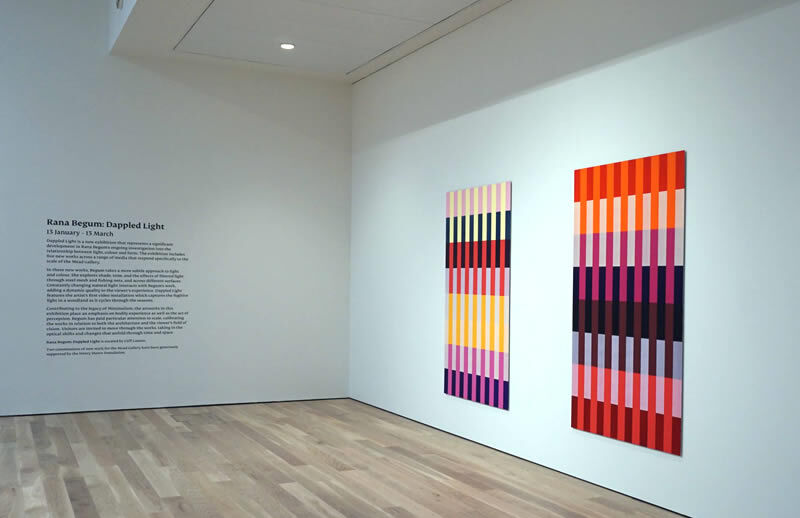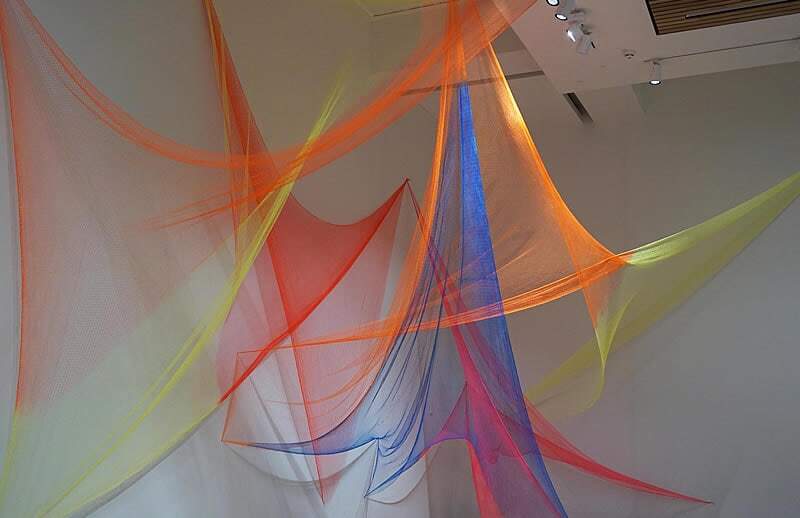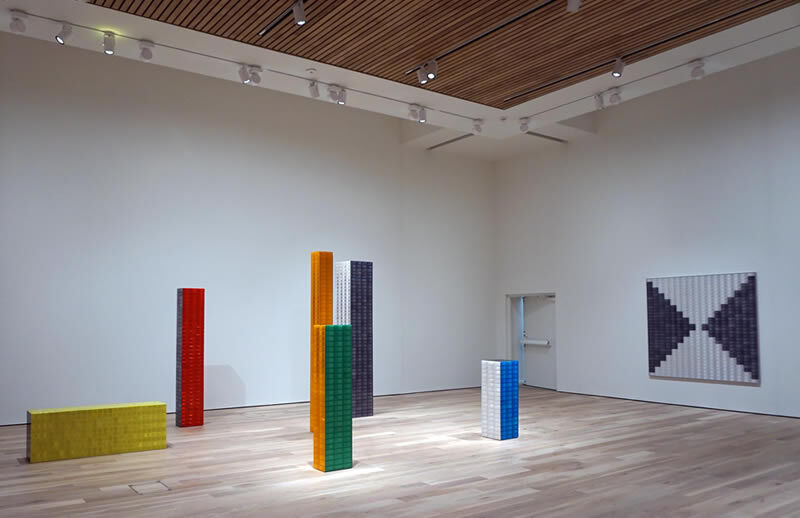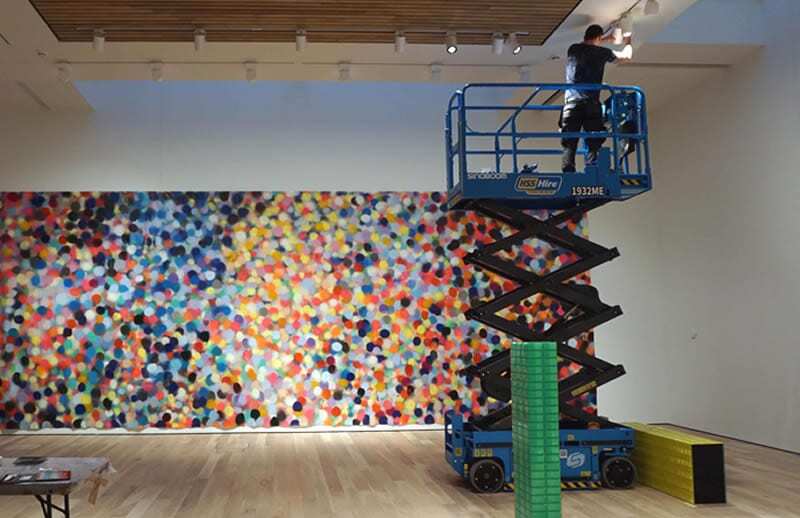Warwick Arts Centre – Mead Gallery
Dappled Light by Rana Begum
Artist Information
After undergoing a three-year hiatus, the Mead Gallery at the Warwick Arts Centre has recently reopened its doors with an exceptional exhibition by Rana Begum, titled “Dappled Light.”
The exhibit is a magnificent endeavour of the perception of light and colour, and it features a comprehensive collection of Begum’s works, including paintings, sculptures, and installations. Additionally, one of her art pieces was specially commissioned for the new gallery, adding an extra layer of uniqueness to the experience. Rana Begum is a globally renowned artist, showcasing her artworks in exhibitions and collections worldwide, making this exhibition a must-visit for art lovers.
Project Information
Warwick Arts Centre called our lighting design consultancy at short notice to assist them with the exhibition lighting. As part of the restoration of Mead Gallery, a new DALI (Digital Addressable Lighting Interface) system was designed and installed by others, allowing individual light fixtures to be dimmed separately from the other 152 luminaires.
On handover of the building, there was minimal to no knowledge of utilising or controlling the lighting. As time was of the essence, and with the exhibition’s opening only a few days away, we immediately came to the site to assess the equipment and lighting controls.
This DALI dimming method allows for precise control of light levels (LUX) and may be operated via a laptop, iPad, or Android tablet. As a result, the light levels could be changed from the ground to create the required appearance and light levels. However, this is only possible once the light fixtures are correctly positioned and tilted. This DALI technology also allows lighting scenarios to be designed to change light levels to pre-set levels either by a push of a button or on a timed basis. With this in mind, this type of system is better suited for permanent galleries than temporary exhibitions.
Rana Begum’s pieces explore the interaction of form, light and colour.
There were also three kinds of LED light fittings provided. These included wall washers and two different angles of spotlights, with a CRI of 97 and a 4000 Kelvin cool light temperature.
The lighting track had been installed in various locations on the central ceiling in each gallery space. This layout makes it ideal for lighting anything directly beneath or hung on the existing gallery walls. Nevertheless, it also produced areas where sculptures could not be illuminated on the side closest to the outer walls or between galleries. These issues are something that the Warwick Arts Centre is planning to address with the contractor before their next exhibition.
Consequently, a far more flexible solution would have been to utilise Bluetooth lighting fixtures, controls, and management systems. Bluetooth mesh technologies are future-proof, stable, and significantly more intelligent and versatile than DALI. Moreover, they can be easily added to.
Any artist’s work requires methodical lighting since they have a strong visual image of what their work should communicate. Each of Rana’s pieces analyses the interaction of form, light, and colour with architecture, light, and shadow.
Light is fundamental to Rana Begum’s process.
Rana was particularly concerned that the net sculpture should not generate a net shadow on the gallery wall. Furthermore, the largest sculpture in gallery three should highlight the vivid colours and provide dappled light on the floor. The reflector tower sculptures were particularly challenging to light without creating unwanted glare, multiple floors, and wall shadows. We overcame this by using additional spots to burn out the unwanted shadows. This methodology ensured we maintained the sparkle that made them pop.
Natural light (also known as daylighting) came in via the skylights in each of the three galleries.
Throughout the day, natural light intermingles with the artwork, altering how it is perceived and interacts with the building. Fortunately, all of the galleries had motorised skylight blinds. Subsequently, we closed these to be able to work and view the artificial light before leaving the blinds open permanently.
This work was made possible by collaborating closely with the artist, Mead Gallery’s senior curator Sarah Shalgosky, curator Thomas Ellmer, and the centre’s technicians.

